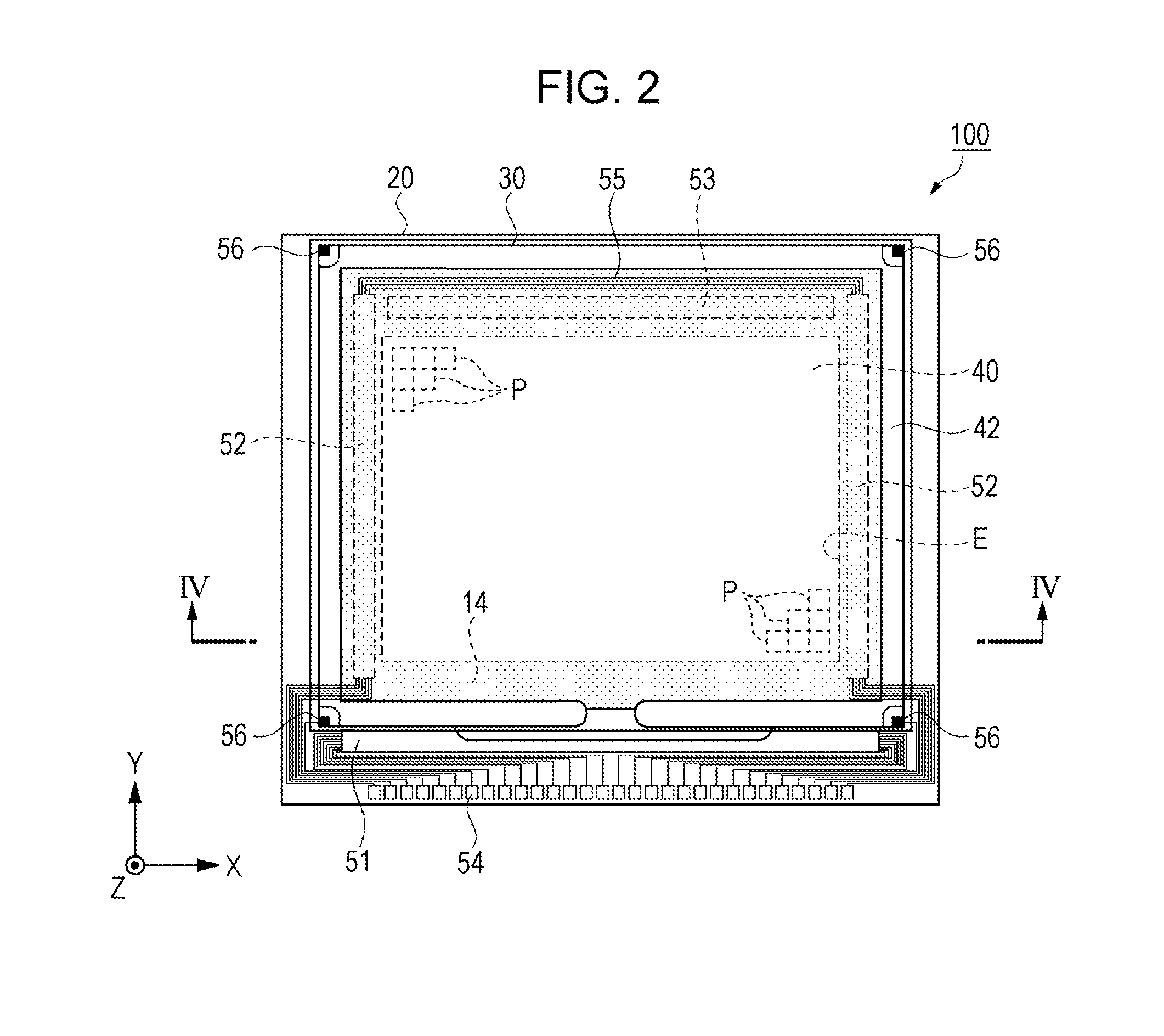Electro-optical device and electronic instrument
a technology of electro-optical devices and electronic instruments, applied in the direction of non-linear optics, identification means, instruments, etc., can solve the problems of inability to obtain desired optical characteristics, relatively easy to occur display unevenness, and formation of electro-optical devices in which display unevenness occurs easily with respect to simple shifts in assembly, etc., to achieve the effect of suppressing image luminance unevenness
- Summary
- Abstract
- Description
- Claims
- Application Information
AI Technical Summary
Benefits of technology
Problems solved by technology
Method used
Image
Examples
embodiment 1
[0111]In the present embodiment, description is given using an active matrix type liquid crystal device as an example of an electro-optical device that is provided with a thin film transistor (TFT) as a switching element of a pixel. It is possible to use the liquid crystal device suitably as an optical modulation element (a liquid crystal light bulb) of a projection type display device (a liquid crystal projector) that will be described below.
[0112]Firstly, a projection type display device will be described with reference to FIG. 1 as an electronic instrument in which a liquid crystal device is adopted as the electro-optical device of the present embodiment. FIG. 1 is a schematic diagram that shows a configuration of a projection type display device.
[0113]As shown in FIG. 1, a projection type display device 1000, as the electronic instrument of the present embodiment, is provided with a polarized light illumination device 1100 that is disposed along a system opt...
modification example 1
[0205]The second opening components in the pixels P are not limited to opening sections Pm that are stipulated by the microlenses ML and the light shielding films 14. FIG. 13 is a schematic plan view that shows second opening components (opening sections Pm) of a Modification Example. As shown in FIG. 13, the second opening components (the opening sections Pm) in the opposing substrate 30 need not have the microlenses ML, and may be black matrices (BM) that extend in a lattice from in the X direction and the Y direction. In addition, the second opening components may be prisms that condense incidence light into an opening region of the pixels P, or color filters that convert incidence light into colored light. Furthermore, the second opening components may be configured to combine the microlenses ML, prisms, or color filters with the abovementioned black matrices (BM).
modification example 2
[0206]In the abovementioned embodiment, an example in which the microlenses ML that configure the opening components were provided on the opposing substrate 30 side was shown, but it is also possible to apply the correction method of the positions of opening components of the present application in a case in which the microlenses ML or prisms that configure the opening components are provided on the element substrate 20 side, and light is incident from the element substrate 20 side. In addition, a configuration in which the microlenses ML and prisms are respectively provided on the element substrate 20 and the opposing substrate 30 is also possible. In either case, the opening components that are positioned on an incidence side of light are set as the second opening components.
PUM
| Property | Measurement | Unit |
|---|---|---|
| frequency | aaaaa | aaaaa |
| transmittance | aaaaa | aaaaa |
| refractive index | aaaaa | aaaaa |
Abstract
Description
Claims
Application Information
 Login to View More
Login to View More - R&D
- Intellectual Property
- Life Sciences
- Materials
- Tech Scout
- Unparalleled Data Quality
- Higher Quality Content
- 60% Fewer Hallucinations
Browse by: Latest US Patents, China's latest patents, Technical Efficacy Thesaurus, Application Domain, Technology Topic, Popular Technical Reports.
© 2025 PatSnap. All rights reserved.Legal|Privacy policy|Modern Slavery Act Transparency Statement|Sitemap|About US| Contact US: help@patsnap.com



